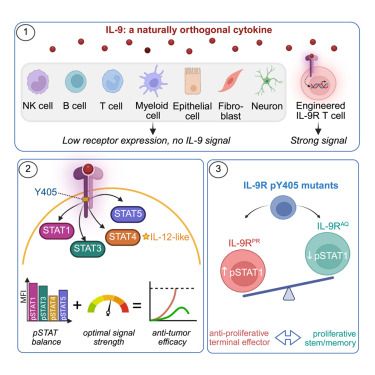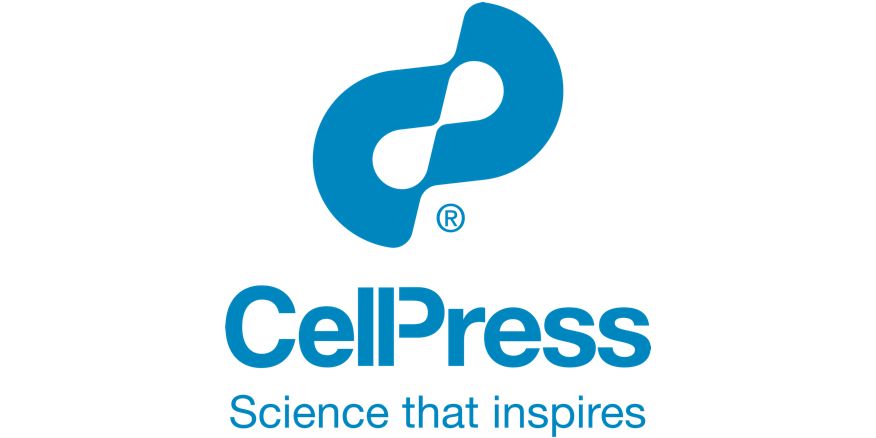
Online now: A chemical agonist and the Golgi-resident lipid PI4P activate STING by inducing transmembrane helix rearrangement
05.12.2025 15:48 — 👍 2 🔁 0 💬 0 📌 0@cp-immunity.bsky.social
Cutting-edge research in immunology from around the world, and commentaries by thought leaders. Cell Press. Tweets by Immunity editors.

Online now: A chemical agonist and the Golgi-resident lipid PI4P activate STING by inducing transmembrane helix rearrangement
05.12.2025 15:48 — 👍 2 🔁 0 💬 0 📌 0
Review @cp-immunity.bsky.social
A host-centric view of the microbiota metabolome
www.cell.com/immunity/ful...

Clonal persistence dominates homeostatic intestinal IgA responses @cp-immunity.bsky.social
www.cell.com/immunity/ful...

Online now: Clonal persistence dominates homeostatic intestinal IgA responses
01.12.2025 15:48 — 👍 3 🔁 0 💬 0 📌 0
#WeekendRead! #FroendsOrFoes?! Benamar, Chatila &co identify @cp-immunity.bsky.social a #GutBrain axis leading to microbiota- & TLR-dependent induction of Notch3+ Tregs in the gut that in multiple sclerosis migrate to the CNS & interacting with microglia become pathogenic Th17 cells!
29.11.2025 17:31 — 👍 6 🔁 1 💬 0 📌 0
Virus-specific CD8+ tissue-resident memory T cells trigger epithelial antiviral defenses via IFNγ @cp-immunity.bsky.social @emoryuniversity.bsky.social
www.cell.com/immunity/ful...

Deep profiling of human T cells defines compartmentalized clones and phenotypic trajectories across blood and tonsils @cp-immunity.bsky.social @ucirvine.bsky.social @tcellwhisperer.bsky.social
www.cell.com/immunity/ful...

Online now: Human lung CD8+ tissue-resident memory T cell-derived interferon-γ orchestrates subset-specific antiviral programming in airway epithelial cells
26.11.2025 20:55 — 👍 3 🔁 1 💬 0 📌 0
We are #absolutely #thrilled to #present @cp-immunity.bsky.social - Deep profiling of human T cells defines compartmentalized clones and phenotypic trajectories across blood and tonsils: Immunity www.cell.com/immunity/ful...
26.11.2025 15:47 — 👍 17 🔁 11 💬 1 📌 1
Online now: Deep profiling of human T cells defines compartmentalized clones and phenotypic trajectories across blood and tonsils
26.11.2025 15:48 — 👍 1 🔁 1 💬 0 📌 0
Our good friend @christophthaiss.bsky.social from @arcinstitute.org argues in the current @cp-immunity.bsky.social Voices that cytokine sensing by the brain may be key to decoding age-related decline, borrowing the concept of interoception from Erwin Schrödinger:
www.sciencedirect.co... 🧪

Online now: Topography of the HLA-A protein enforces shared and convergent immunodominant B cell and antibody alloresponses in transplant recipients
24.11.2025 15:48 — 👍 3 🔁 0 💬 0 📌 0
Online now: IL-9 as a naturally orthogonal cytokine with optimal JAK/STAT signaling for engineered T cell therapy
21.11.2025 23:39 — 👍 2 🔁 1 💬 0 📌 0
Online now: IL-9 signaling redirects CAR T cell fate toward CD8+ memory and CD4+ cycling states, enhancing antitumor efficacy
21.11.2025 20:56 — 👍 0 🔁 0 💬 0 📌 0
Immunity is now on LinkedIn! Follow us if you love #immunology! And if you don't already love immunology, maybe we'll change your mind 😀https://www.linkedin.com/company/immunity-cellpress
21.11.2025 20:22 — 👍 10 🔁 2 💬 0 📌 0
IL-9 enhancement of engineered CAR-T therapies
@cp-immunity.bsky.social @pennpress.bsky.social @xrtcell.bsky.social @stanforduniversity.bsky.social
www.cell.com/immunity/ful...
www.cell.com/immunity/ful...

Online now: Membrane integrity changes upon viral infection activate sphingomyelinase SMPDL3B to restrict cGAS-STING signaling via cGAMP degradation
21.11.2025 15:49 — 👍 1 🔁 0 💬 0 📌 0
IgA generation from IgG1 precursors through sequential class switching @cp-immunity.bsky.social @yalepress.bsky.social @nupress.bsky.social
www.cell.com/immunity/ful... @stephanieeisen.bsky.social

Online now: Sequential class switching generates antigen-specific gut IgA from IgG1 B cells
17.11.2025 20:55 — 👍 4 🔁 1 💬 0 📌 0
Online now: FOXP3 expression depends on cell-type-specific cis-regulatory elements and transcription factor circuitry
17.11.2025 15:49 — 👍 1 🔁 0 💬 0 📌 0
Online now: Glymphatics and meningeal lymphatics unlock the brain-immune code
17.11.2025 13:53 — 👍 2 🔁 0 💬 0 📌 0
#WeekendRead! #FriendOrFoes?! Zhang &co show @cp-immunity.bsky.social that herpes simplex virus #HSV1 exploits changes in membrane integrity to activate a GPI-anchored hydrolase which degrades cGAMP preventing #cGAS/#STING activation & favoring virus infection
www.cell.com/immunity/ful...